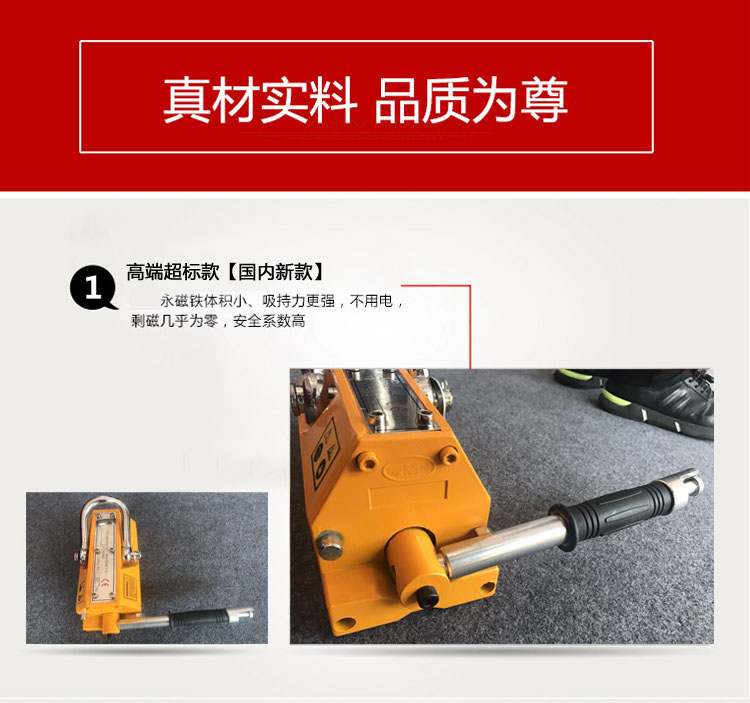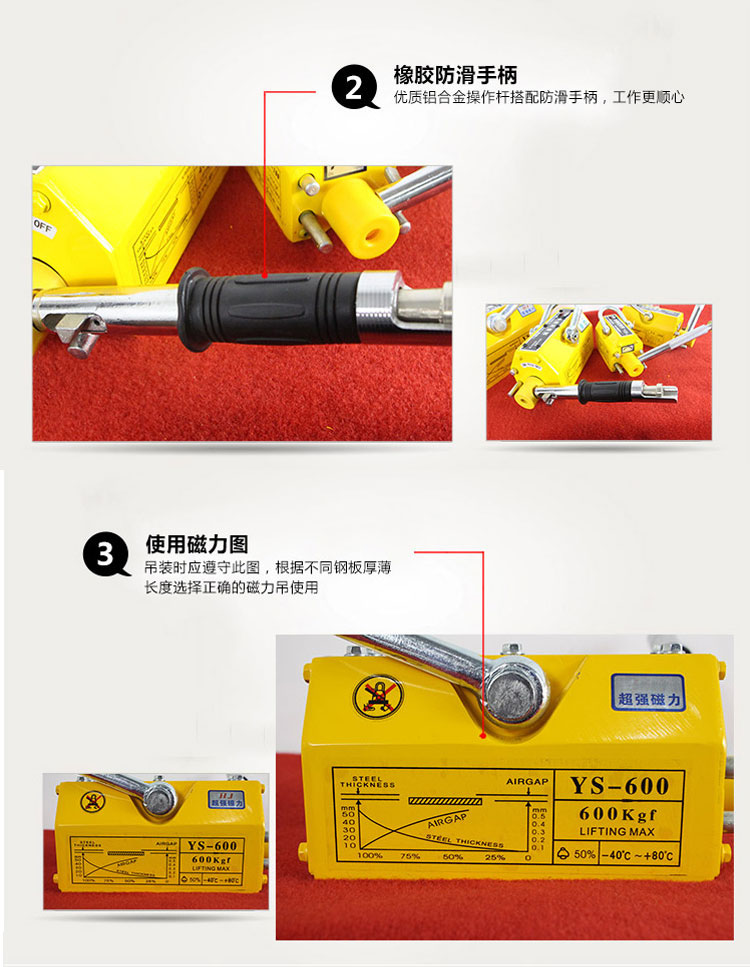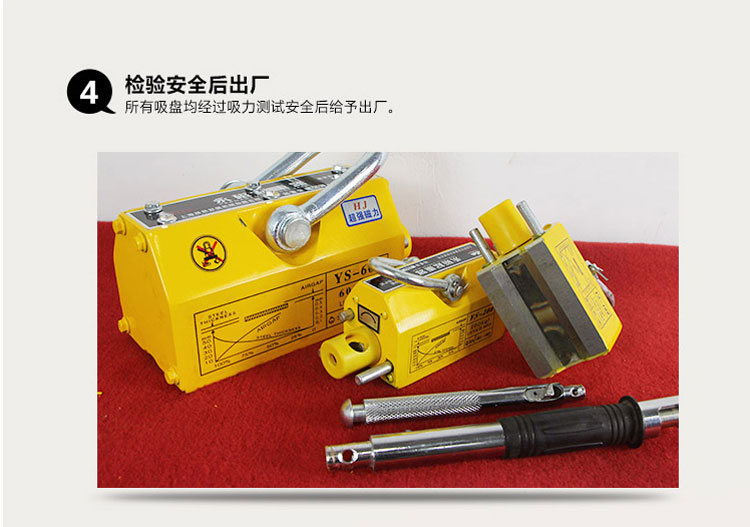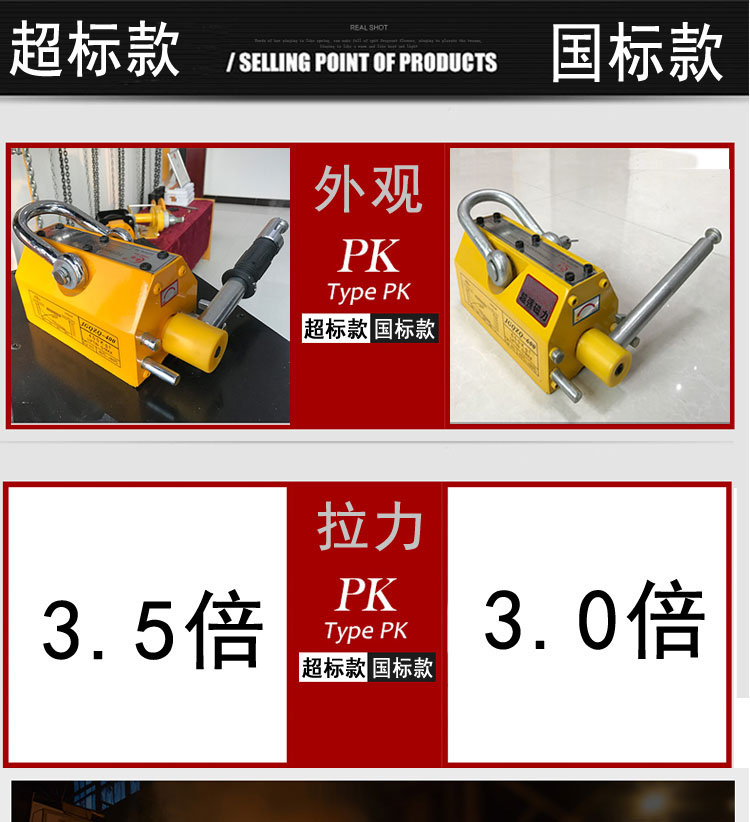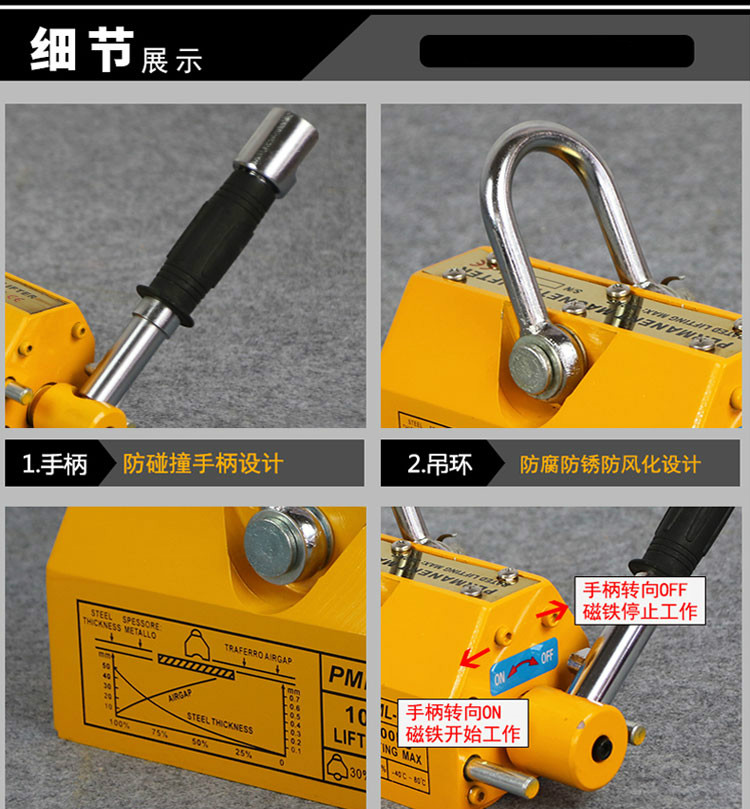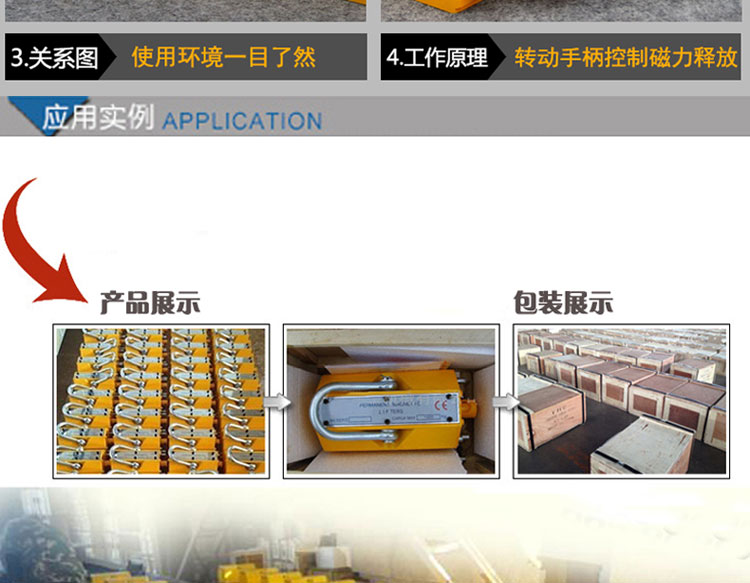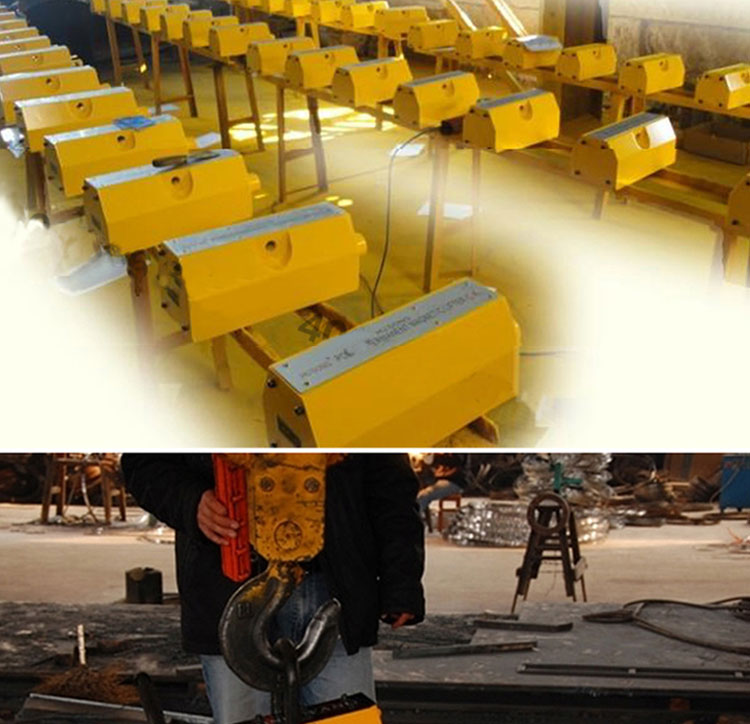
100kg-4000kg Handing Steel Plate Pml Permanent Manual Magnetic Lifter
Keyword:Permanent Magnetic Lifters Time:2019-4-24 0:26:32
Safety Instructions:
Place the magnet on the Ferrous Surface in "OFF" position and then make it "ON";. Do not make it ON without keeping it on ferrous surface
The magnet is to be placed on the center, i.e. centering to the center of gravity of the load and then lift
While handling the load, no person should be allowed in the immediate danger zone
Ensure that the lever is made "OFF" after resting the load at desired place in balance position
Important Factors for the Safe Operation of Lifting Devices
Load characteristics other than just weight must be considered in order to determine the weight that any magnetic lifter can lift. This statement is true for any lifting magnet because they all operate on the same fundamental laws of Physics. Magnetic power is pictured as lines of force flowing from North to South Pole. Anything that limits the flow of these magnetic lines of force obviously reduces the magnet's lifting ability. There are four important factors which limit the flow of these lines of force.
Load Surface Conditions
Magnetic lines of force do not flow easily through air, they need iron in order to flow freely. Therefore, anything that creates an air gap between a magnet and the load, limits the flow of magnetic force and thus reduces the lifting capacity of a magnet. Paper, dirt, rust, paint and scale act in the same way as air, so also a rough surface finish between the magnet and the load.
Load Length and Width
When the length or width of a load increases, it ceases to lie flat and the load begins to drop at the edges. The drooping/sagging of the load can create an air gap between the load and the magnet. If this occurs then the lifting capacity of the magnet is reduced.
Load Thickness
Magnetic lines of force are more effective when they flow through iron instead of air. The thicker the load, the more the lines of magnetic force. After a certain thickness of load, no more lines of force will flow because the magnet has reached its full capacity. Thin material (load) means less iron available and thus fewer lines of magnetic force flow from the magnet into the load. Therefore, the lifting ability of the magnet is reduced. Every magnet is rated for minimum thickness of load to reach full lifting capacity. Below such thickness of load will de rate the lifting capacity of the magnet. In general, it can be said the load must be thicker than the width of one of the magnet poles.
